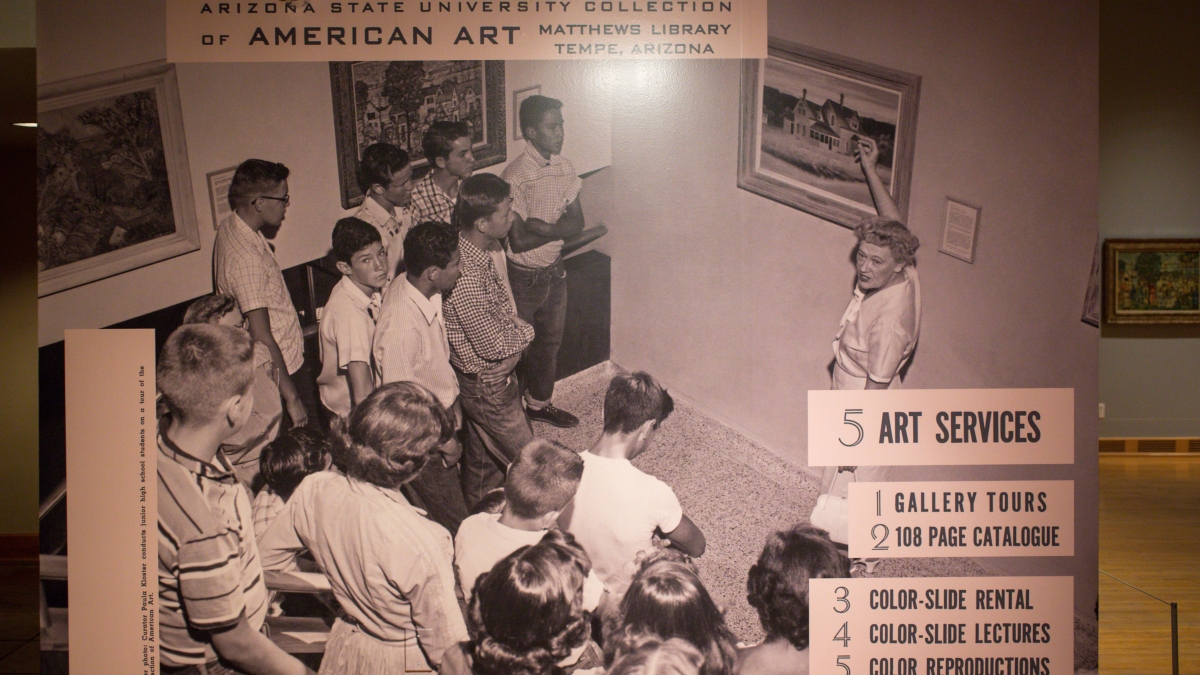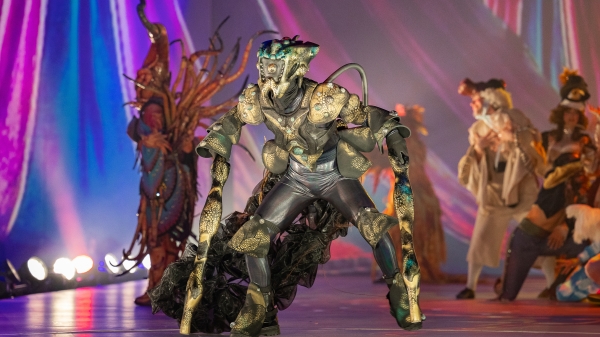Exhibit takes visitors back to ASU Art Museum's founding

The "Found(ing) Story: The Oliver B. James Collection" exhibit goes back in time to tell the story of how the ASU Art Museum was founded 65 years ago.
The year is 1950, and tucked away among the stacks of books in Arizona State College’s Matthews Library hangs a small collection of American art.
There’s a painted still life of fruit and pottery cast against a crimson background. A moonlit, tree-filled shore glows with the simple, but profound, warmth of twilight. And a man sits in a harvested field while shucking corn in a scene courtesy of noted American landscape painter Winslow Homer.
These are among the first 16 paintings of what would eventually become the ASU Art Museum, which now holds a collection of more than 12,000 objects.
But 65 years ago – before Arizona State University was even a university – it all started with a small anonymous gift by a donor who wanted to provide students, faculty, schoolchildren and the general public with the opportunity to view original works of art.
That generous donor was Phoenix attorney Oliver B. James, and over the next five years he gave close to 150 works of primarily American art to the school.
The ASU Art Museum’s latest exhibition, “Found(ing) Story: The Oliver B. James Collection,” showcases its formative time and puts a spotlight on this humble origin story.
It begins with James, an avid art collector who wanted to represent the growing prominence of American art. He was passionate about his collection and worked closely with the head librarian and curator at Matthews Library on the placement of the pieces.
“We have delightful letters to the curator, Paula Kloster, and the head of the library, with suggestions on placing the works for powerful comparisons and to build the narrative of the history of American art,” said Heather Lineberry, associate director of the ASU Art Museum. “James’ passion for collecting, his own curiosity and study of art and artists and his excitement to be sharing it with the students and public comes through loud and clear.”
When the books in Matthews Library were moved to the new Hayden Library in 1965, James’ art collection remained and the building was renamed the Matthews Center. Eventually, the museum grew to 10,000 square feet, and in 1989 the collection moved to its current venue at Nelson Fine Arts Center. Select pieces remained on permanent display up until four years ago.
Now visitors to the museum have a chance to view much of James’ art again, but with a fresh perspective – as new research has emerged on the collection. It joins a series of exhibitions the museum has presented over the past few years, which examine its collections and exhibition history.
“‘Found(ing) Story: The Oliver B. James Collection’ looks at the beginnings of the museum’s collecting and exhibition history and its early mission, which is essentially the same today – a meeting point for the exchange of new ideas, perspectives and experiences among artists, students and the public through our exhibitions, residencies, collections and programs,” Lineberry said.
Aside from those first 16 pieces, which are arranged in chronological order, the exhibition includes work from prominent American artists, such as Georgia O’Keeffe and Edward Hopper.
“Many of our visitors remember particular paintings from past visits, or from when they were a student at ASU, and they have deep personal attachments,” Lineberry said. “It’s like visiting an old friend with powerful memories and associations.”
And though most of the pieces, which date back to the 19th and early 20th centuries, lend a more traditional feel to a museum that has become known for its contemporary art, Lineberry points out that when James first donated the art, many pieces – such as one of O’Keeffe’s first skull paintings – were contemporary for the time.
“The museum has always had a focus on the art of our own time. When James was collecting … many of these works, they were contemporary and radical in their style and subject matter,” Lineberry said. “Our historic collections provide context and the opportunity to build powerful narratives that are relevant today.”
“Found(ing) Story: The Oliver B. James Collection” is on view in the Art Musuem’s Americas Gallery through Nov. 14. Admission is free. For more information, visit asuartmuseum.asu.edu.
More Arts, humanities and education

ASU alumna makes her way back to the ASU Gammage stage for '¡azúcar!'
As the Los Angeles-based CONTRA-TIEMPO dance group prepares for its upcoming production “¡azúcar!” at ASU Gammage, for one member…

ASU FIDM professor wins international award for fantastical, sustainable creation
The horror of an ailing Earth inspired an Arizona State University fashion professor to create a fantastical garment out of…

ASU workshop trains educators, professionals from marginalized communities in disaster science
As devastating as hurricanes can be to anyone caught in their paths, they strike marginalized communities even harder.To address…